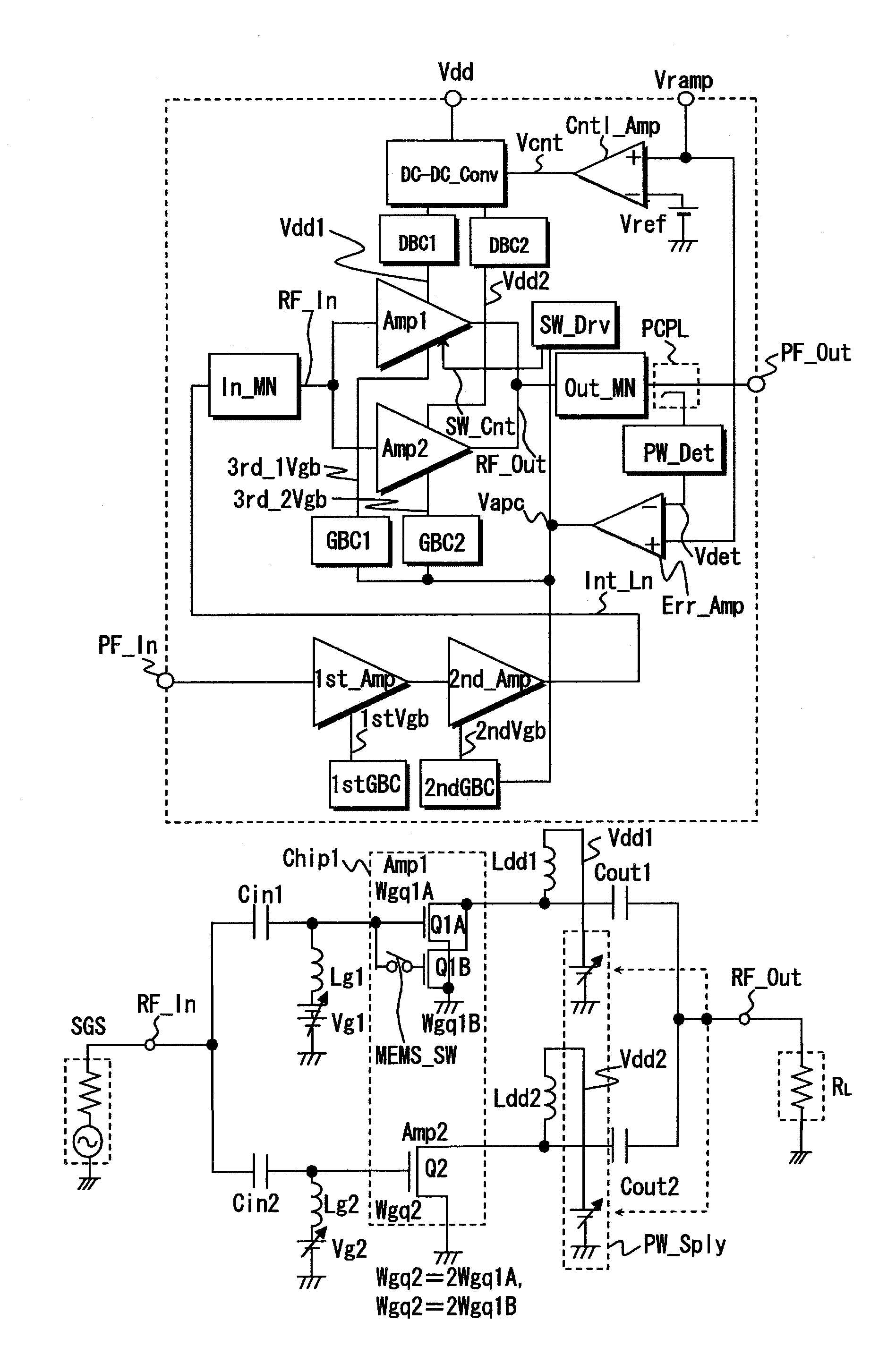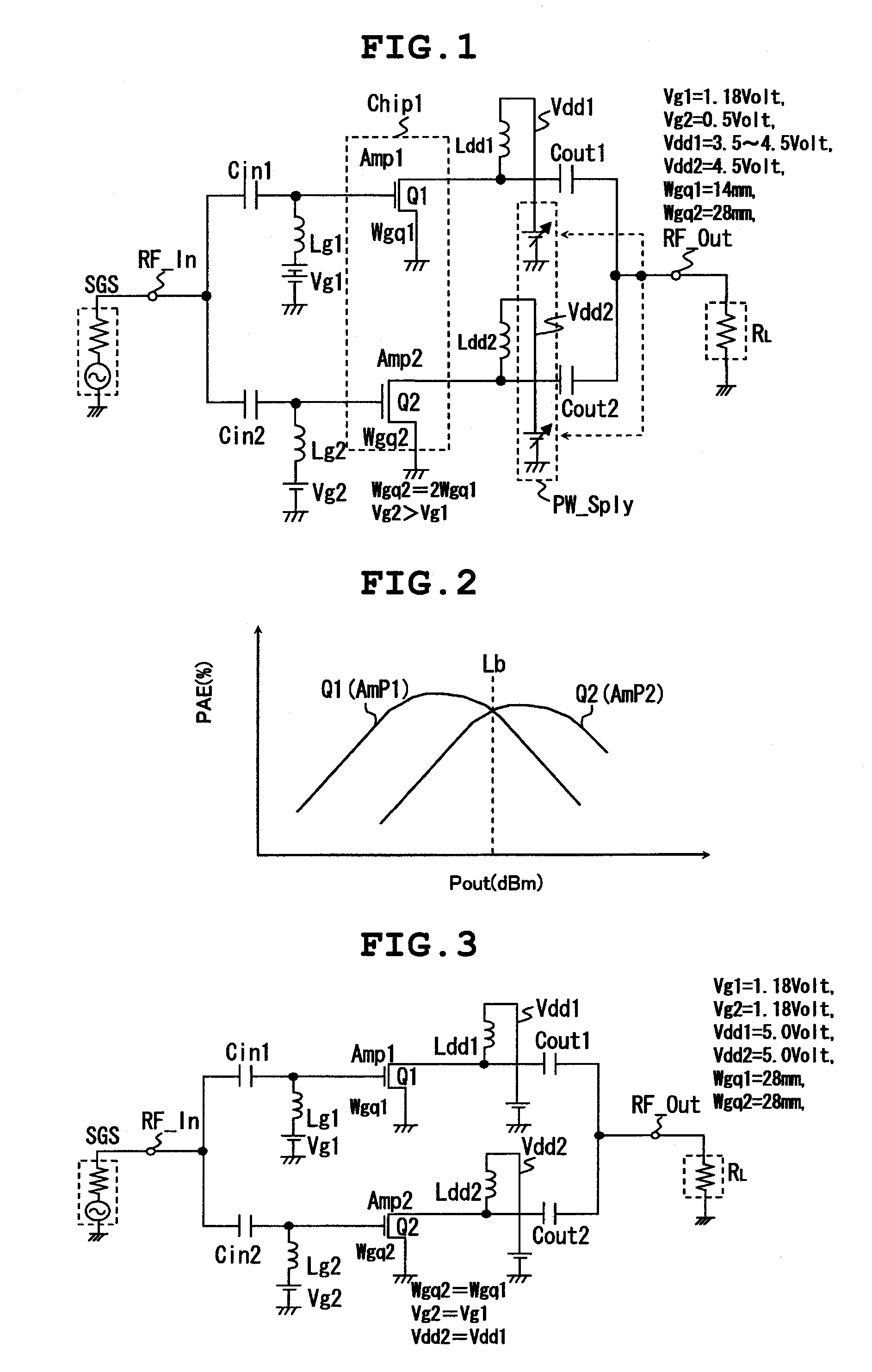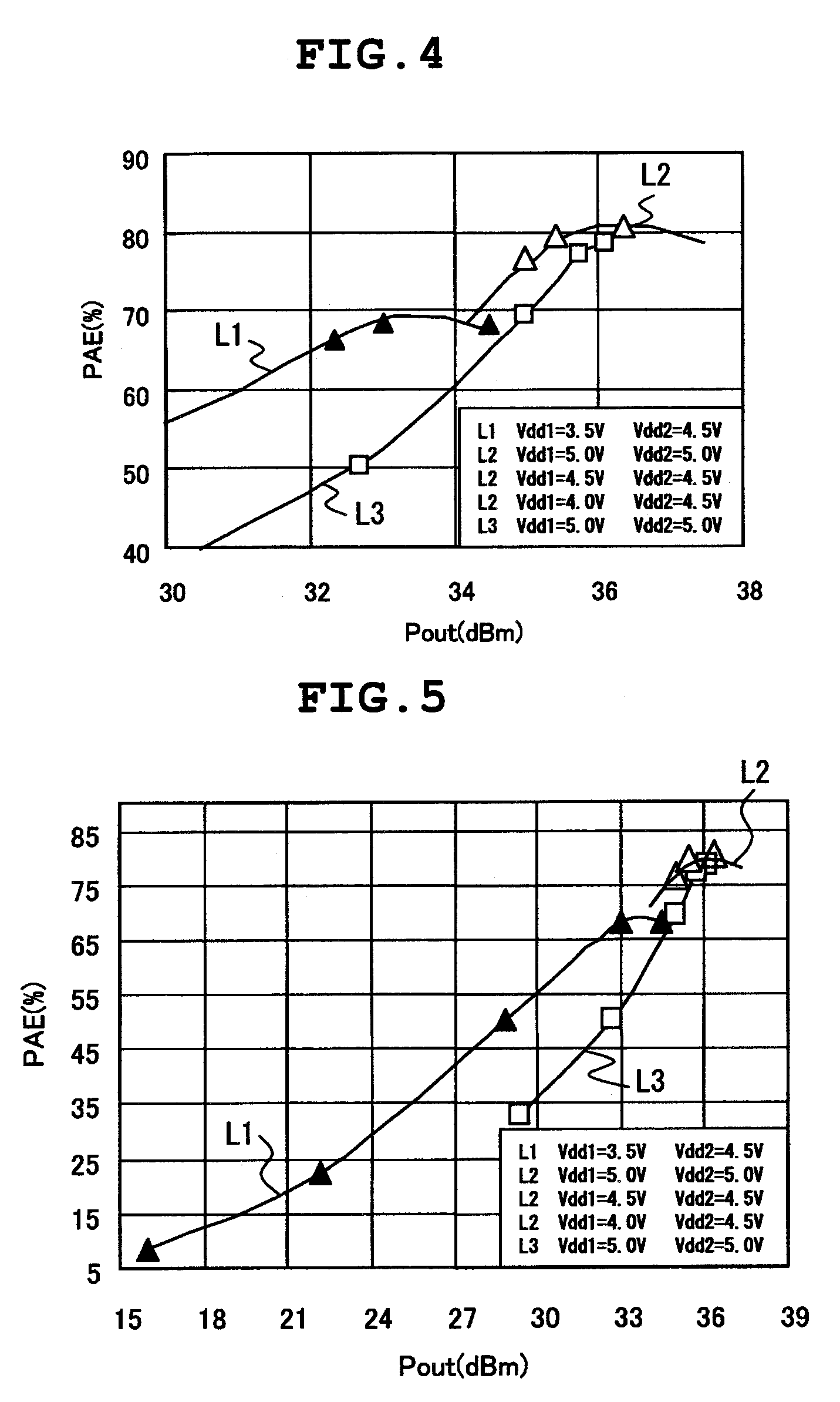RF power amplifier
a power amplifier and amplifier technology, applied in the direction of rf amplifiers, supply voltage varying control, transmission, etc., can solve the problems of inability to improve the efficiency of the amplifier apparatus working at a middle output level or lower, the control system of a portable terminal and/or the entire system thereof can be significantly affected, and the power gain can change rapidly, etc., to achieve the effect of increasing the efficiency of the high-frequency power amplifier, increasing efficiency, and increasing efficiency
- Summary
- Abstract
- Description
- Claims
- Application Information
AI Technical Summary
Benefits of technology
Problems solved by technology
Method used
Image
Examples
embodiment a
[0170]FIG. 18 is a block diagram showing a high-frequency power amplifier of Embodiment A in association with the invention. The high-frequency power amplifier 100 of Embodiment A includes: a plurality of power amplifiers (AMP1) 110 and (AMP2) 111 disposed in parallel (two power amplifiers are exemplified here); and a plurality of bias control circuits (Bias_cont1) 112 and (Bias_cont2) 113, each controlling corresponding one of the plurality of power amplifiers 110 and 111 in bias in accordance with a method of modulating an input signal, which are formed on a monolithic board. The power amplifiers 110 and 111 each have an input terminal connected to a high-frequency signal input terminal 101 through a signal distributing part, and an output terminal connected to a high-frequency signal output terminal 102 through a signal synthesizing part. The bias control circuits 112 and 113 each have an input terminal connected to a modulation signal information input terminal 105, and an outpu...
embodiment b
[0176]FIG. 21 is a block diagram showing a high-frequency power amplifier in accordance with Embodiment B of the invention. The high-frequency power amplifier 200 in accordance with this embodiment includes: power amplifiers (AMP1) 210 and (AMP2) 211; bias control circuits (Bias_cont1) 212 and (Bias_cont2) 213; a high-frequency signal input terminal 201; and a high-frequency signal output terminal 202. Further, the high-frequency power amplifier has an RF_IC part (MOD RF_IC) 214 including a signal modulation part and a signal source (Signal) 215 connected thereto from the outside.
[0177]In the high-frequency power amplifier 200 in accordance with this embodiment, the RF_IC part 214 including the signal modulation part offers modulation signal information. A high-frequency signal to be input to the high-frequency signal input terminal 201 of the high-frequency power amplifier 200 is sent from the external signal source 215 through the RF_IC part 214 to the input terminal. Other operat...
embodiment c
[0179]FIG. 22 is a block diagram showing a high-frequency power amplifier in accordance with Embodiment C of the invention. The high-frequency power amplifier 300 in accordance with this embodiment includes: power amplifiers (AMP1) 310 and (AMP2) 311; bias control circuits (Bias_cont1) 312 and (Bias_cont2) 313; distributed parameter lines (TRL_IN1) 303, (TRL_OUT1) 304, and (TRL_OUT2) 305; a high-frequency signal input terminal 301; and a high-frequency signal output terminal 302. Further, the high-frequency power amplifier has an RF_IC part (MOD RF_IC) 314 including a signal modulation part and a signal source (Signal) 315 connected thereto from the outside.
[0180]As for the high-frequency power amplifier 300 in accordance with this embodiment, as in the case of Embodiment B shown in FIG. 21, a high-frequency signal to be input to the high-frequency signal input terminal 301 is sent from the external signal source 315 through the RF_IC part 314 including the signal modulation part to...
PUM
 Login to View More
Login to View More Abstract
Description
Claims
Application Information
 Login to View More
Login to View More - R&D
- Intellectual Property
- Life Sciences
- Materials
- Tech Scout
- Unparalleled Data Quality
- Higher Quality Content
- 60% Fewer Hallucinations
Browse by: Latest US Patents, China's latest patents, Technical Efficacy Thesaurus, Application Domain, Technology Topic, Popular Technical Reports.
© 2025 PatSnap. All rights reserved.Legal|Privacy policy|Modern Slavery Act Transparency Statement|Sitemap|About US| Contact US: help@patsnap.com



